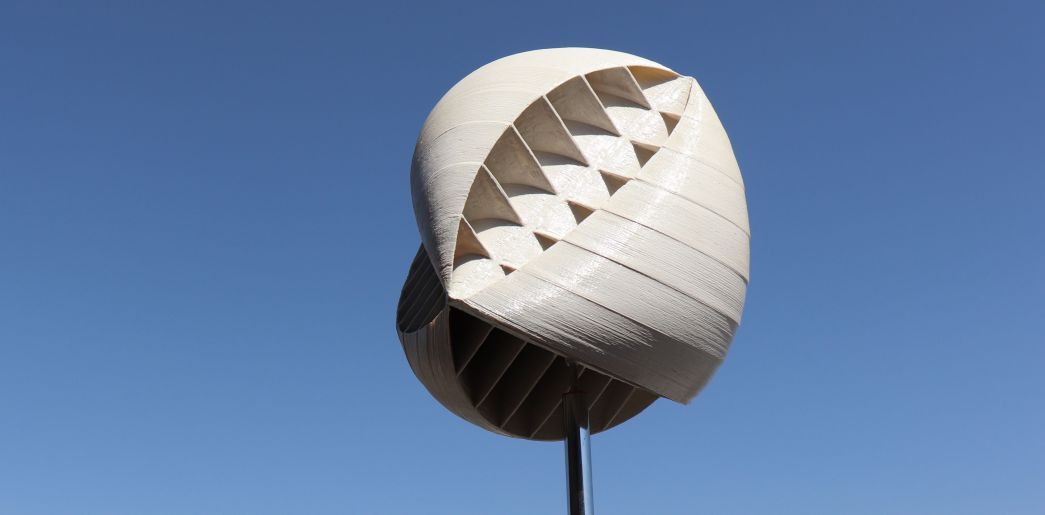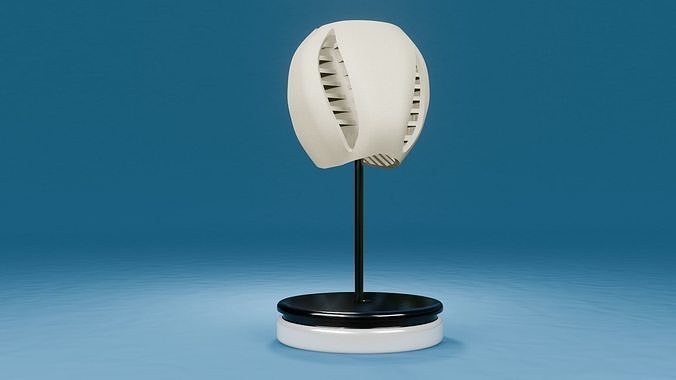Imagine a wind turbine that doesn’t have to turn to face the breeze—it just keeps spinning no matter where the air comes from. That’s the promise of omni-directional wind turbines (ODWTs), a new family of machines designed for rooftops, balconies, telecom towers and other places where gusts swirl and shift too quickly for conventional three-bladed turbines to keep up.
What makes an ODWT different?
Traditional turbines sit on a tower and “yaw” so their rotor faces the wind. In chaotic urban air that motor spends half its life hunting for direction, losing output and wearing itself out. ODWTs flip that logic:
- 360° capture. Their spherical bodies, vented cubes or fixed shrouds gulp wind from every angle—horizontal, vertical, anything in between.
- Pressure trickery. Wide inlets and narrow outlets create low-pressure zones (Bernoulli/Venturi effect) that spin either an internal rotor or the whole shell.
- One moving axis. Power goes straight to a generator shaft—no yaw motors, no pitch actuators. That simplicity is why early patents emphasised “fewer rotating parts”.
Who’s building them now?
- O-Wind (UK). A 2.2 m bladeless sphere aimed at balconies and façades; wind-tunnel tests of a 70 cm prototype delivered almost three times the torque of its first design round.
- Ventum VX175 (Norway). A rooftop unit inside a 1.75 m stationary shroud, rated for roughly 4 000 kWh per year at 6 m s-¹ and whisper-quiet at 40 dB.
Small labs in Japan, India and Australia are also publishing diffuser-assisted versions for village micro-grids, but O-Wind and Ventum are the first to talk commercial launch dates.
3D concept of O-Wind’s Omni-directional wind turbine
Where do they shine?
- Dense cities. On apartment blocks or warehouse roofs, winds bounce off walls and arrive from all sides. ODWTs keep spinning where classic rotors stall. Testing shows noise levels are “virtually silent,” a big deal for zoning.
- Isolated towers. Telecom masts in hills or canyons face winds that switch direction minute to minute; a device with no yaw motor cuts maintenance trips.
- Floating or moving platforms. Ventum’s fixed shroud still works if the deck pitches or turns, making it interesting for barges and remote islands.
Benefits
- Less to break. Taking out the yaw system and blade-pitch actuators can trim scheduled maintenance by about 30 %, according to claims in early shrouded-turbine patents.
- Better in gusty air. Computational-fluid-dynamics (CFD) studies show 5–10 % more annual energy than open vertical-axis machines when the wind direction changes constantly.
- Quiet and bird-friendly. Blade tips stay hidden inside a shell or the sphere itself, cutting peak noise by roughly 10 dB and removing the main strike hazard.
- Tiny footprint. A 1 kW ODWT can sit on one square metre of roof—useful where solar panels already cover everything flat.
So what does it cost?
That part is still foggy. O-Innovations says its micro units will come in “well below $250” each, but hasn’t published a retail price. Ventum has opened pre-orders for the VX175 yet keeps the MSRP under wraps. Without hard numbers, analysts can’t pin down a $/kWh comparison to rooftop solar or small horizontal-axis turbines. For now the business case rests on noise limits, space constraints and aesthetics rather than raw cents-per-kilowatt-hour.
Key patents you’ll bump into
- US 2008 / 0023964 A1 – A shrouded turbine that guides air up through a vertical throat; notable for its low-maintenance design.
- US 6 465 899 B2 – Early omni-directional vertical-axis concept using rotor-stator rings for rooftops.
- WO 2006 / 066310 A1 – Diffuser-assisted design claiming a 40 % boost over open rotors in light winds.
These filings underpin most modern shapes: either a fixed shroud plus internal rotor or a vented sphere/cube that spins itself.
Take-home message
Omni-directional turbines won’t replace the giant three-bladers on windy plains. But they could unlock wind power in places we’ve written off: balcony railings, office-block edges, telecom towers, even moving barges. The engineering looks solid—lab tests confirm real energy gains and calmer acoustics. What’s missing is mass-production pricing. If companies like O-Innovations and Ventum can hit the market at a sensible $/kW, these “wind catchers” might do for small-scale wind what micro-inverters did for rooftop solar: turn ignored surfaces into quiet, safe power plants.

